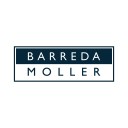What are common or usual marks for peruvian caselaw?

Published byBarreda Moller

Article 135 paragraph g) of Decision 486, Industrial Property Common Regime, establishes that may not be registered as trademarks those marks which consist exclusively of or have become a common or usual designation of the concerned product or service in the everyday language or normal use of the country.
The marks to which Article 135 paragraph g) of Decision 486 refers are the so-called common or usual marks.
The Intellectual Property Specialized Division of the Court of INDECOPI has stated that common or usual denominations are those used by the consumer public in the common or commercial language to designate products or services. (INDECOPI. Compendio de Jurisprudencia, Sala de Propiedad Intelectual – Caselaw Compendium, Intellectual Property Division (1996-1999). Volume I. Page 38). (Resolution No. 0495-2018/TPI-INDECOPI of March 9, 2018 issued by the Intellectual Property Specialized Division of the Court of INDECOPI. Page 4).
In the same line, the mentioned Division has established that common or usual marks must be analyzed not only based on their grammatical or etymological concept, but according to the common and current meaning used in the country for the products or services sought to be distinguished. (INDECOPI. Compendio de Jurisprudencia, Sala de Propiedad Intelectual – Caselaw Compendium, Intellectual Property Court (1996-1999). Volume I. Page 38). (Resolution No. 0495-2018/TPI-INDECOPI of March 9, 2018 issued by the Intellectual Property Specialized Division of the Court of INDECOPI. Page 4).
The Peruvian administrative Authority applied Article 135 paragraph g) of Decision 486 when rendering Resolution No. 0322-2013/DSD-INDECOPI of January 30, 2013, which denied the registration of trademark CERVEZA LA CHELITA, to distinguish “beer” in class 32, as the Authority considered that said trademark incurred in the registration prohibition established in Article 135 paragraph g) of Decision 486 since: (i) the word BEER was generic with respect to the product sought to be distinguished and (ii) the designation CHELITA was the diminutive of the designation CHELA, which, despite not having acknowledged meaning in the dictionary, it made reference to beer in Peruvian slang.
Now then, Article 135 paragraph g) of Decision 486 only mentions as common or usual marks those which exclusively consist of or have become a common or usual designation of the concerned product or service in the everyday language or normal use of the country.
Nevertheless, Andean and Peruvian caselaw consider that graphic marks are also common or usual marks.
Indeed, the Court of Justice of the Andean Community has stated that the prohibition of trademark registration, established in Article 35 paragraph g) of Decision 486 must not be understood as referred only to denominative marks, since graphic elements can also become usual or common to distinguish products or services of a particular class. (Prejudicial interpretation of November 21, 2017, issued in Proceeding 206-IP-2016. Page 7. At http://comunidadandina.org)
Moreover, the Intellectual Property Specialized Division of the Court of INDECOPI has stated that common or usual marks can be common or usual denominations or usual figures. (INDECOPI. Caselaw Compendium, Intellectual Property Division (1996-1999). Volume I. Pages 38-40).
In light of the aforementioned, it must be taken into account that, for Peruvian caselaw, the prohibition of granting trademark registration for common or usual marks, established in Article 135 paragraph g) of Decision 486, not only includes those marks which exclusively consist of or would have become a common or usual designation of the concerned product or service in the everyday language or normal use of the country, as expressly stated in said Article, but also usual figures.

